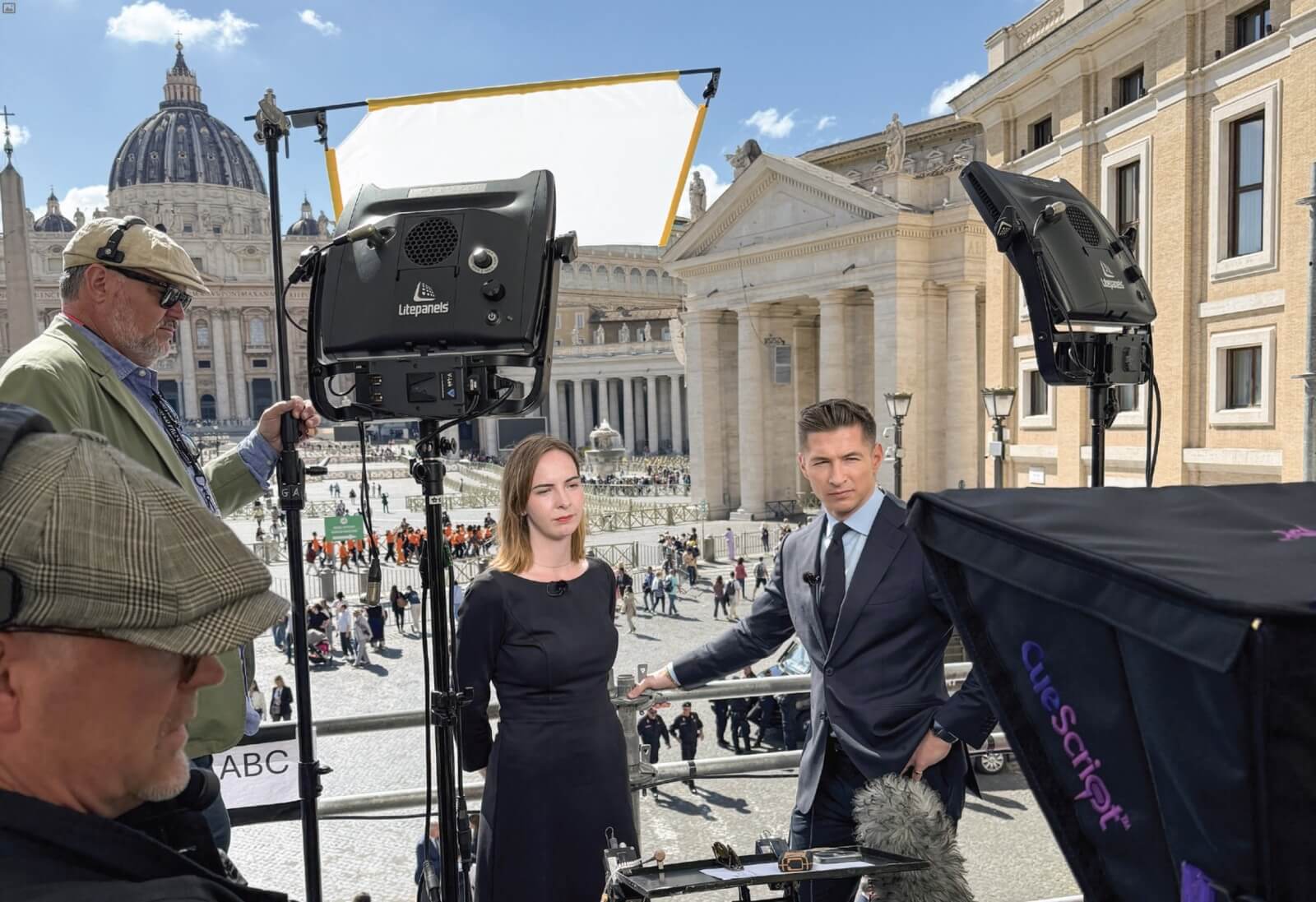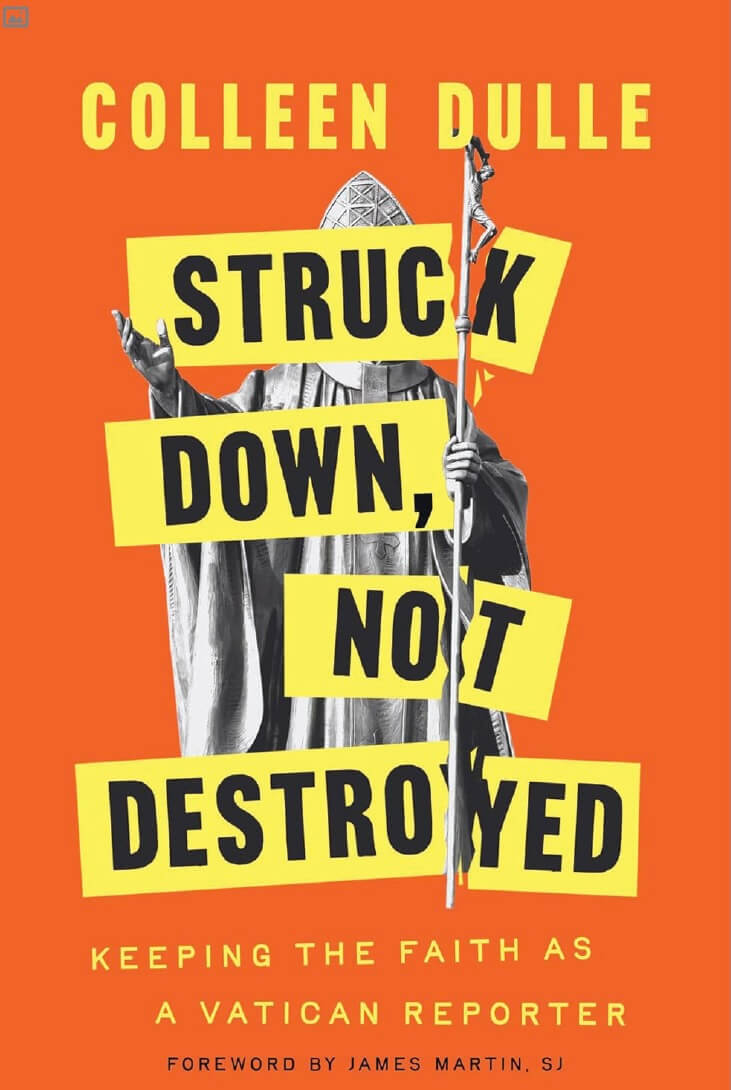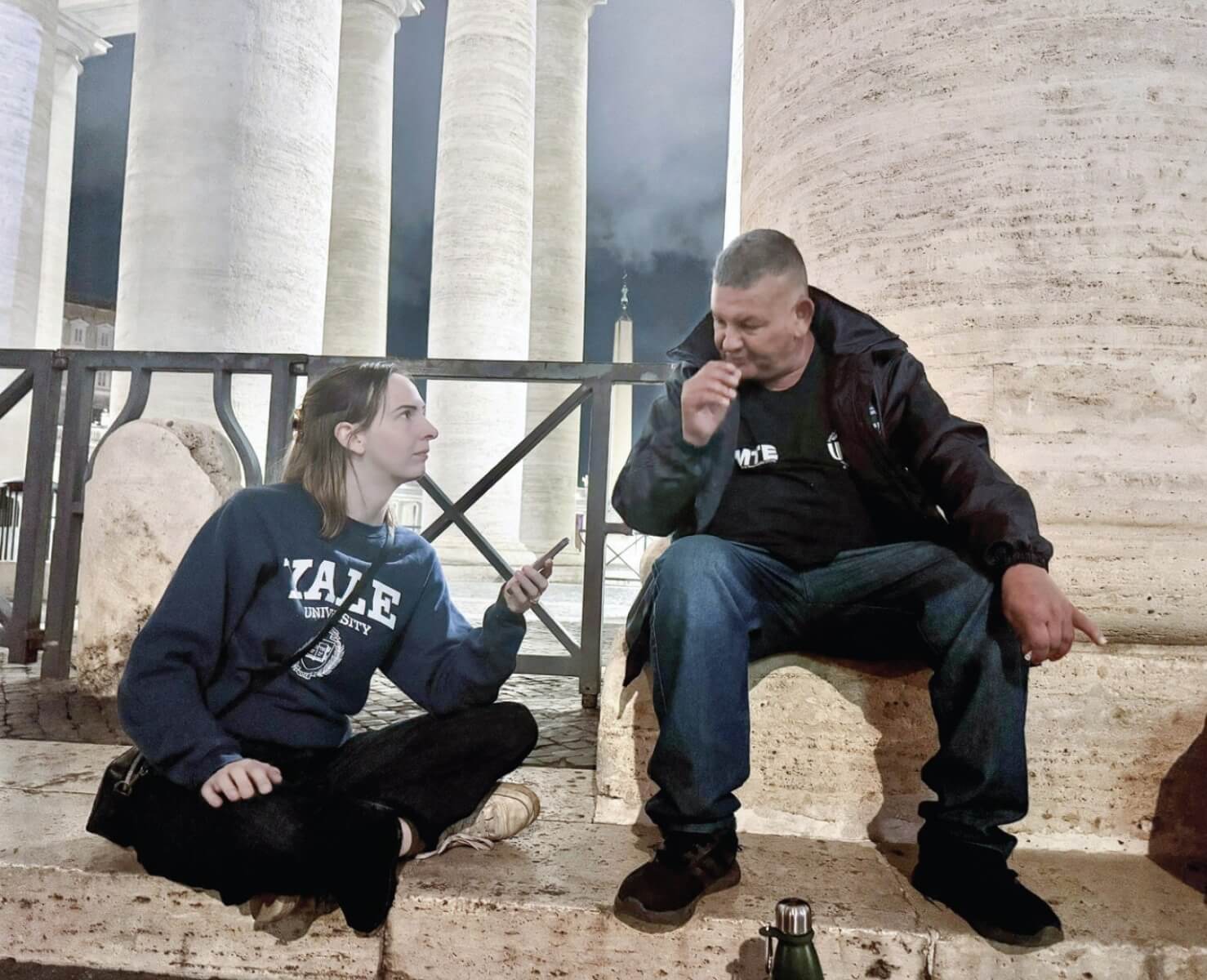Member Spotlight: America's Dulle brings faith, innovation to Vatican reporting

Colleen Dulle, Vatican correspondent for America Media and CMA’s Multimedia Journalist of the Year, shares how her faith, storytelling and multimedia innovation shape her reporting on Church life and the Vatican.
Tell us about your current role and organization. What does your work look like day to day?
I’m currently the Vatican correspondent for America Media, a position I moved into this summer. It’s technically based in Rome, but I’m working from my home in New Orleans as I wait for my visa to move to Rome full-time. Every day I give our staff a morning Vatican update. The first half of my week is primarily taken up with production of our “Inside the Vatican” podcast, and the rest of the time I am usually writing analysis articles, editing articles from other contributors, working on more in-depth “deep dive” podcast episodes, or making short vertical videos on Vatican news. Lately I’ve also had a lot of speaking engagements and promotion work for my book “Struck Down, Not Destroyed: Keeping the Faith as a Vatican Reporter” that came out in August.
What first inspired you to work in Catholic media? Was there a moment or mentor who influenced you?
I always say that I stumbled into Catholic media, because when I was applying for summer journalism internships for the first time, the St. Louis Review was the first newspaper to offer me a spot. From there I went to Catholic News Service in D.C. for two summers, and then on to America. I’ve had some incredible mentors; I think especially of Barb Fraze and Dennis Sadowsky at CNS who taught me so much about reporting and editing well. On the Vatican beat specifically, America’s Gerard O’Connell and CNS’s former Rome bureau chief John Thavis have been incredible mentors.
How does your faith inform your work?

At America, we see ourselves as providing not only news and analysis, but a look at the news from a Catholic, spiritual angle, so I’ve felt encouraged to bring my faith into my work there in a way I couldn’t at, say, a secular publication. My book editor also nudged me in that direction, so my book is about 50-50 reporting and spiritual reflection. I see both my spiritual life and my reporting as a search for the truth — not parallel searches but intertwined.
What is your organization’s mission, and how does Catholic media help advance it?
America is, first and foremost, a media platform that fosters discussion of religion, politics, culture, and so on from a Catholic perspective, so it is by definition inseparable from Catholic media. I think our membership in CMA helps us to remain in dialogue with Catholic media professionals from around the country and world so that we can exchange ideas and work together to grow in both Christian witness and journalistic excellence.
What makes your publication/ministry unique in serving your community?
America’s defining characteristic is its Jesuit charism. We’re inspired by the Ignatian tradition of “finding God in all things,” which at times means we are looking for signs of God’s work in areas others might avoid. In the spirit of Ignatian discernment, we try to step beyond easy dichotomies or facile analyses to ask the better, as-yet-unasked question. We try to get to the heart of the issues we cover, with a special concern for the poor and those on the margins of both the church and society.
How has your organization adapted to changes in the media landscape?
We’re a 116-year-old publication that for the majority of that time was only available as a print magazine. I’ve been very impressed, in my eight years here, to see just how agile our team has been at embracing new platforms and finding ways to make them work for our mission. I often say America runs like a start-up: We’re willing to experiment, change strategy, and we have some really brilliant and creative people who are able to keep us up with a constantly shifting media landscape.
Which platforms or formats have been most successful in reaching people where they are?
The key is meeting people on the platforms they already use. While we maintain a strong base of print subscribers, the podcast boom of the late 2010s led us to launch several successful shows, including my own, “Inside the Vatican,” which has run since 2018. Our film division also shifted from documentaries to more accessible formats like “Jesuit Autocomplete,” our version of Wired’s autocomplete series.
Now, as video podcasting grows on YouTube, we’re adapting our shows for that format. Ahead of the conclave, I saw a demand on TikTok and Instagram Reels for clear explanations of events, so I began producing those. As a result, I nearly doubled my Instagram following — from 7,000 to more than 13,000 — and grew my TikTok from single-digits to 3,000 in just a few weeks.
What innovations have you introduced (new content strategies, design, digital tools) that have made a difference?
Early in my time at America, I helped start a podcast that repurposed our long-running Scripture reflection column into audio form for Advent and Lent. With the same team, I worked to start “Inside the Vatican,” as an innovation to make our Vatican reporting — and our Rome correspondent’s wealth of knowledge — more accessible to casual followers of Vatican news who might not read every article. With me as the audience’s representative asking the questions an average person might have, we were able to get many more people interested in our coverage, establish the podcast as a must-listen source for Vatican news and analysis, and ultimately build up our own credibility (mine as well) as trustworthy, expert sources who could then communicate complex truths to a broader audience in the secular media, like we did during the conclave.
What is the biggest challenge your organization faces, and how are you working to overcome it?

Colleen Dulle (left) interviews Sergio Sánchez, Argentine cartonero and friend of Pope Francis, on the eve of Francis’s funeral under Bernini’s Colonnade at the Vatican.
Although our subscriber base continues to grow, bucking the trend of most print publications, continual growth is always a goal. One specific challenge we’ve been focused on is our desire to expand the audience to reach Catholics who may not regularly consume Catholic media or be aware of what it has to offer. Thankfully, our Jesuit charism gives us a touchpoint with many alumni of Jesuit schools, so we have been working to raise awareness of America with those alumni and, by introducing them to our products, interest them in subscribing.
What project or piece of content are you especially proud of in the past year?
I look back at our conclave coverage and am deeply impressed. After Pope Francis died, our team was able to quickly fundraise to send seven staff members to Rome. From there we worked day and night making daily podcasts in audio and video, working sources, tracking the international press (splitting up duties according to our language abilities and then reporting back to the group), breaking news, writing analyses and explainers, and sharing our expertise on secular outlets across the world. I think we were able to be a clear, faithful and trustworthy voice at a moment when the entire world was watching, and I couldn’t be more proud of the work we did.
How has CMA membership supported your work or helped your organization grow?
On a very basic level, my CMA membership enables me to be accredited by the Holy See Press Office, since CMA issues our press passes. But really, CMA and especially the Catholic Media Conference are how I stay connected and keep up with the work of so many colleagues I’ve previously worked with at other organizations. And I have met new people at CMC with whom I continue to stay in touch to exchange ideas, reach out for local sources, and so on, all of which have been essential for me during these last five years of working remotely. It’s also just been an incredibly supportive and encouraging community, which has been a godsend in my early career.
What do you see as the greatest opportunity for Catholic media today?
I see a ton of opportunity for the Catholic media at this moment of renewal in the church. With the election of Pope Leo and the Jubilee Year, people are looking to the Catholic Church to see what we have to offer, and I think Pope Leo is meeting the moment by being a voice for peace and an alternative to polarization. I think the moment is ripe for Catholic journalists to ask ourselves how we, too, can be voices for true unity and a just peace in the communities we serve.
What advice would you give to the next generation of Catholic media professionals?
I’d give the same advice to new Catholic media professionals that I give to journalism students and even seasoned professionals: Your best asset is a desire to learn and a diverse tool belt of multimedia skills. Media changes constantly — already the industry is completely different than it was when I graduated from journalism school less than a decade ago. Keep learning, keep experimenting with new platforms, even if your efforts flop. It’s worth it to try. Repurpose one story across a few platforms. Likewise, go into reporting a story with an open mind: I’ve often regretted walking into a field assignment thinking I knew what story needed to be told, only to be surprised by the reality that presented itself to me. I think that openness of mind is equally important for telling our neighbors’ stories that they entrust to us as it is for reporting on a complex theological document from the Vatican.
What’s next for you and your organization?
The next big thing for me is moving to Rome! That’s also a next big step for America, as we’ll be doubling the size of our Rome bureau. The papacy of the first Jesuit pope brought the appointment of our first-ever full-time Vatican correspondent, and the papacy of the first American pope will bring our first-ever full-time Vatican reporting team. It’s a thrilling time in the church, and we’ve seen that our readers, listeners and viewers engage deeply with our Vatican content, so I’m really looking forward to being part of that continued growth.
